An Historical and Political Perspective

BAD IDEA TO START A HISTORY BOOK LIST WITH THIS
"Webster's Timeline History of Costa Rica" - by Philip Parker.
This is nothing more than a list VIZ:
"1502 Costa Rica: In 1502, on his fourth and last voyage to the New World, Christopher Columbus made the first European landfall in the area."
And to quote one of my favorite authors, "and so it goes."
This compendium of dates facts baffles me as to who may find it of value. I bought a copy so there's the answer. Move on to MUCH more interesting books below.

THE BEST CONQUISTADOR TALES
"History of the Discovery and Conquest of Costa Rica" - by Ricardo Fernandez Guardia
If you have any interest at all in the founding, finding and wrecking of early Costa Rica, this is the book to get. Fascinating tales of mayhem, stupidity and greed all well researched by Snr Guardia who had retired as Minister for Foreign Affairs in the Costa Rican government when he wrote this work of art in 1913. He was a writer , politician and diplomat and was born in Alajuela , Costa Rica , in 1867 and died in San José, Costa Rica, in 1950 .
I am summarizing but the duration of the conquest starting in 1502 with the first landing in today's Panama and for the next 80 to 100 years was one big mess. An average expedition set off with maybe 100 conquistadors and perhaps 300 indigenous slaves to carry baggage, weapons, boats and such. The indigenous often quit shortly after the expedition began and maybe 20 or 30 of the original conquistador expedition returned.
Conquistador colonies or villages (they called them cities) often plotted against each other and sometimes decimated each other. Litle gold was found and few indigenous submitted to slavery. When they were not killing each other they were incompetent farmers and often starved. One conquistador expedition might a few years later find a former one - all the inhabitants might be naked and starving. On occasion canibalism was reported.
This book is full of interesting insights for locals for example,
" In the beginning of 1572 the Governor returned to Cartago and in the same year effected the removal of that city to the site of Mata Redonda, today known as Sabana, to the west of San Jose. The townsmen, who had longed so ardently for the valley of Guarco, did not find themselves any better off. The town founded in a soil of clay, was converted during the rainy season to a swamp, where fore the nickname Ciudad del Lodo (City of Mud) was bestowed upon it. Nevertheless some years later Cartago was reestablished in the valley of Guarco, although not to its original site."

HOW THE BANANA REPUBLIC FOUND THE TRUE VALUE OF BANANAS
"Keith and Costa Rica" - by Watt Stewart
Completely fascinating tale of how a railway was started and how bananas were determined to be a way to make money from the railway. My edition is a 1964 hardback.
The first reference to a railway concession showed up in a Harpers magazine article on another unique character Thomas Francis Meagher (see Harpers magazine articles).
Minor Keith is an epic figure in Costa Rican history and this book is a really great tale. Minor can take a lot of credit for establishing a huge trade with the US and setting the tone for what would become an unfortunate period in central American history. As the author notes, "Keith made a fortune sometimes using means which were not im all respects admirable."
Minor was also a lucky guy - one day at his finca somewhere on the Caribbean slope he was leaning against a tree and it collapsed revealing a large cache of pre-colombian gold probably stashed by pirates.

STARTING A BIZ IN CR? - COSTA RICA IN AN 1893 NUTSHELL
"Costa Rica the Gem of American Republics. The Land, It's Resources and It's People." - by Richard Villafranca.
I quite liked this one. There is all kinds of interesting mundane detail that help understand history better - Banana production, costs etc are detailed for example. If you were going to set up a business in Costa Rica at the turn of the last century, this would have been an invaluable tome.
Towards the end of the short book Richard offers sage advice on "Where to Settle" . . . he includes,
"To make an advantageous selection requires special knowledge of the country, which the newcomer would not be apt to acquire until many unfortunate mistakes had been made. Upon this and all questions, I shall be glad to talk personally to intending settlers at the Cotton States and International Exposition."
And that he did in Atlanta 1893.

WHAT IS CORNELIUS VANDERBILT DOING HERE?
"Tycoon's War" - by Stephen Dando-Collins.
You can't understand Costa Rica without understanding the gringo influence. One figure who loomed larger than life in the region was Cornelius Vanderbilt, aka The Commodore.
This complex tale is very well told. As one reviewer remembered,
"We start with one of the coolest lines in the history of capitalism -- a letter from a tycoon to his erstwhile business partners: Gentlemen, you have undertaken to cheat me. I won't sue you, for the law is too slow. I'll ruin you. Yours truly, Cornelius Vanderbilt."
Vanderbilt wanted to run a business ferrying gold and passengers between California and New York via Nicaragua which at the time was controlled briefly by a nut job called William Walker. Mr Walker was slightly mad and eventually got funded by southern slaver state residents to take over central America and set up slaver colonies. He had originally invaded Nicaragua with less than 200 men, mostly gold rush rejects from the US.
But he sorely interrupted Mr Vanderbilt's trade who then provided arms and money (we believe, though the book is very sketchy here) to President Mora of Costa Rica to attack Walker in Nicaragua. There were multiple advances but the successful advance was marked with the first column into Nicaragua being led by an agent of Vanderbilt.
The Costa Rican force kicked Walker's butt out of the country but not before many on both sides died of yellow fever, cholera and their wounds.
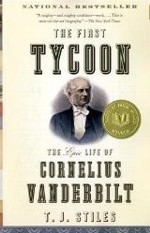
SEEKING WHAT REALLY HAPPENED TO LOONY TUNES WALKER?
"The First Tycoon: The Epic Life of Cornelius Vanderbilt" - by T.J. Stiles
Sometimes you go on a trail to discover new things about a person - in this case I was looking for two things - the interaction between Vanderbilt and William Walker and how was it that Costa Rica actually attacked another country for the first and last time. I was on the trail of William Walker.
T J Stiles is a master researcher. The organization and supporting notes maybe make up 1/3 of the book. My reading focus only takes up a small part of this book but it answered many questions - one I asked to the author.
"You imply that Vanderbilt provided funding not just for Costa Rica but for the other Central American armies that eventually kiboshed Walker . . . however I can find no references to who funded what with how much? If Vanderbilt had a heavy hand in the Walker defeat (beyond sending a smart agent, Spencer) then there should be somewhere "a large shipment of rifles" or a large transfer of gold or some trail that links Mora and Vanderbilt. More importantly for an accurate understanding of proactive Costa Rican aggression in the region, if in fact Mora might not have attacked WITHOUT Vanderbilt support then Costa Rica never invaded anyone ever? Though they did chase Walker OUT in 1856. This seems to me to be a pivotal piece in the puzzle I call "what is a Costa Rican?". Unfortunately Costa Rica looses more history than it makes".
T.J. replied,
" I tried in my book to give all due credit to the Central Americans in evicting Walker, since they did the fighting and dying. Walker and his apologists have written about him as if he were some kind of military genius; he wasn't, but then again military genius is rare, and the Central American alliance had plenty of problems, too.
There was vague talk of Vanderbilt supporting the other allies, but I found only definite proof that Vanderbilt sent money to Costa Rica (I think it was $40,000 in gold, but I'd have to check my own book) as well as Sylvanus Spencer. Also, I came to the conclusion that the arms Costa Rica received were shipped by Britain, President Mora's ally, but it's unclear if they were paid for with Vanderbilt's money or not.
Yes, the only reason the initial Costa Rican incursion failed was cholera—Walker's headlong attack at Rivas failed miserably. And the Mora brothers fully realized that the San Juan River was the vital supply route and channel for reinforcements. However, the river was inaccessible, and it would have been difficult to move and supply a fairly large force through the rain forest to attack it. Also, the British controlled the mouth of the river, which kept all combatants away from the river's most vulnerable point. Vanderbilt supplied not only money (which we know was critical, since the war bankrupted Costa Rica), and not only a man with daring, but critically a man with detailed knowledge of the actual steamboat operations on the river. With Spencer in charge of the expedition, Mora could send a small force to seize the forts and the boats through stealth and trickery, rather than costly frontal attacks.
In the National Archives at College Park, Maryland, I found a lengthy deposition by Joseph N. Scott, the steamship company agent at San Juan del Norte/Greytown, as well as sworn depositions by crewmen on the riverboats that s how that Spencer was fully in charge of the Costa Rican party, and declared he seized the boats "in the name of Cornelius Vanderbilt." I also found the actual order from President Mora placing Spencer in charge of the force.
I think the "intellectual authorship" question is moot. Anyone could see that the San Juan was the critical point; it would take a real case of strategic idiocy to fail to see that the river was Walker's potential chokepoint. The question was the means—how to cut off the river at a reasonable cost. Vanderbilt supplied the man with the necessary knowledge and the funding for the operation. He didn't "win" the war, but he provided the key ingredients to end it much sooner than it otherwise would have. Yes, the Mora brothers knew they had to cut the river, but the specific way in which the river was captured (swiftly and almost bloodlessly) depended entirely upon Spencer's knowledge and daring.
In writing my book, I tried to get the emphasis right. North American history is still subtly influenced by the "stupid greaser" prejudice of the nineteenth century, when U.S. citizens couldn't give Central Americans credit for anything. The fact is, the Central Americans (including many Nicaraguans) fought and truly won the war against Walker, at a heavy cost. But an honest appraisal must recognize that Vanderbilt helped shorten the war by providing key advantages that the Costa Ricans simply did not have on their own—i.e. money and Spencer.
There is no good recent account that uses the sources I drew upon for my book. But "The Nicaragua Route," a 1972 book by Folkman, I believe (it's in my endnotes), is pretty good. To really follow it up, you'd have to go to the United States and conduct archival research!".

IF YOU WERE HERE IN 1890
"Costa Rica and her Future" - by Paul Biolly.
First published in 1889, the edition I have is a scan of the original using Robbie the Robot to turn the pages and then an OCR to clean up the text.
I was very happy with this book, so many pages are turned up (that's how I tell).
One bit,
"It is customary in Europe and the United States to consider the old countries of Spanish America as lands par excellence for political struggles with arms and military revolutions. This opinion, though true as regards many Spanish American republics is, in reference to Costa Rica, absolutely false. . . . . blood has never flowed on Costa Rican soil shed by fratricidal hands save under rare and exceptional circumstances not worth mentioning."
In 1888 the census showed 204,201 persons of which 1701 lived in Limon province. I am guessing they did not do an indigenous count as the number would have been much higher?
Mr Biolley's work was diligent and detailed.

CATCHY TITLE AWARD FROM 1896 - RAILROAD EXPLORATIONS IN COSTA RICA
"Intercontinental railway commission: report of surveys and explorations made by corps No. 2 in Costa Rica, Colombia and Ecuador. 1891-1893 1896" - by Corps No. 2.
Published in 1896, the edition I have is a scan of the original - quite nice and very good quality.
It is one of the few great things governments such as that of the USA can do - leave behind wonderful tales of public works efforts like this one. "Can we build a railroad across the Americas?".
An excerpt,
"San Jose is said to contain 30,000 pols. It is pretty much a one story town being on earthquake ground. Most of the big buildings shaken down a few years ago still lie in ruins. It is a coffee center, rather sleepy, at present between crops. There are good stores here and many of them, evidencing brisk trade in the trade season. There is said to be a colony of 500 North Americans in the place. It rains almost every day, without exception every night. They have rather poor water ditched several miles to a suburban reservoir.. No sewers. Streets high crowned with broken stone and compacted by a steam roller made in Brooklyn. We see more American goods here than anywhere in our travels."
There are some very interesting tales of this US survey team trying to find the best routes for a railway that was never laid.

THE BEST OF TRAVELERS TALES FROM THE 1800'S
"Harper's Magazine" - by many great authors
First published in 1850 this magazine is a treasure trove of first hand travel experiences everywhere in the world. There are some excellent storiess from Costa Rica.
I have a few original copies and one from October 1887 provides an introductory story on Costa Rica. The drawings are absolutely wonderful in many of the Harper's tales and this one is no exception - one entitled "The road from Port Limon to San Jose" really gives the idea of how dificult travel was in the 1800's here.
There is sometimes some delightful mumbo jumbo such as this thought,
"It is the theory of local scientists that there is a subteranean connection betsween the group of Volcanoes, and that prodigous fires are constantly burning beneath. Therefore it is necessary for at least one of them to be always doing business,to permit the smoke and gasses to escape the crater . . . "
and you know what would happen if that were not the case!
There is a nice detail of the first railroads, the cost of construction estimated at "$37,500 per mile" with all necessary materials purchased in England. This was done under the guiding eye of General Tomas Guardia, an enlightened cowboy who became a dictator and did some pretty interesting and remarkable stuff. He could neither read nor write when he took office yet left behind some of the underpinnings of modern Costa Rica.

NON VEGETARIAN HISTORY AT ITS BEST, AN 1890 VIEW
"The Republic of Costa Rica" - by Joaquin Bernardo Calvo.
Published in 1890, the edition I have is a facsimile print of the original complete with excellent prints, photos and tables. Snr Calvo presented the original work to the Ministry of Public Works of Costa Rica in 1886 and prefaced it with these words, "I have compiled and arranged a series of notes - geographical, statistical and historical - of the Republic of Costa Rica. . . ." And it is just that and more.

FREDERICK's 1865 RIDE ACROSS A CONTINENT
"A Ride Across A Continent Volumes 1 and Volume 2" - by Frederick Boyle.
These are my reprints from the generalbookclub.com - a recommended series of books being scanned and made available electronically or in book form.
Frederick is a delightful writer with a nice touch of humor and a naturalists eye for the beauty of Nicaragua and Costa Rica starting in October 1865. There are marvelous insights into the what was then the wreckage of the exploits of William Walker who had been chased out of town just a few years earlier.
Frederick also follows the explorations done in the 1840's to see if a canal might be possible between the Caribbean and the Pacific . . . the financial estimates in hindsight were a little ludicrous. The stories of travel at that time are just wonderful and the author constantly meanders off into treatises on things like the horrid effect of civilization or how did we get here from ancient Greece - here being deep in the jungle of Northern Costa Rica.
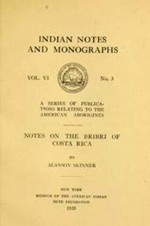
ORIGINAL BRIBRI from 1917
"Notes on the Bribri of Costa Rica" - by Alanson Skinner.
Published in 1920, the edition I have is a facsimile print of the original complete with prints, photos and diagrams of Bribri life at the beginning of last century.
Today you can visit the Bribri still in the same locations described in this slim volume. We highly recommend the trip out from Puerto Viejo area on the Caribbean. You drive to Bribri village then a few kilometers to the Sixaola River on the border with Panama. A Bribri guide will take you in a motorized dugout a couple of hours upriver to the village of Yorkin. This is not to be missed - the people are a delight and you will help along their local economy just a little.
Unlike some other indigenous groups the Bribri are descended from South American tribes - some of the activities, building methods, craft-work are no longer practiced as described in this book however you may never visit a more remote and well protected indigenous group ever again.

THE HISTORY OF COSTA RICA, A BIT ABRIDGED FOR MY LIKING
"The History of Costa Rica" - by Ivan Molina and Steven Palmer
Published in 1998, this book, in 154 large type pages traces Costa Rica from 12,000 BC to today or just short of today.
If you want a limited view and a limited amount of reading then you could get an idea of how Costa Rica grew into this unique and exceptional country. But there are many better books to do that with IMHO.
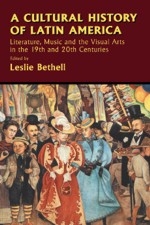
DOES COSTA RICA RANK IN CULTURAL CONTRIBUTION?
"A Cultural History of Latin America" - by Leslie Bethell.
Published in 1998, this is a big book with almost no Costa Rican content. This nicely researched 500 page tome proves a point I was trying to make at a "cocktail party" once when, not realizing I was talking to an active artist pontificated, "there is no art in Costa Rica". Which promptly got me in deep kaka trying to justify it in general terms such as "kilos of art" per person or "how come our art museum is so tiny" or my personal favorite "you know I once went to the San Ramon art show and bought both pieces."
This did not help.
Of course there is art in Costa Rica - yes I did buy both pieces in San Ramon, I spent a day visiting Bribri houses of known artists in multiple villages and found maybe 5 pieces, we have visited many houses in Boruca buying their lovely masks for the Pura Vida Hotel gift shop and we often travel to a hilltop near Cartago to purchase lovely ceramics from Cecelia de Figueres. And yes we even took a San Jose art tour once but came back feeling a lack of something. I am definitely not an art critic but overall Costa Rica has never been a rich country, never really had much art patronage and even the churches are small and mostly uninteresting. But that is not it's claim to fame anyway.
Little by little this is changing -one example is our local school where the director insists all students get a dose of arts - which explains sometimes the horrid sounds of massed drums across the valley.
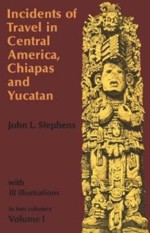
NO 4WD ON THIS TRIP in 1841
"Incidents of Travel in Central America, Chiapas and Yucatan" - by John L. Stephens.
Originally published in 1841, the edition I have was made in 1969 - this book gives a wonderful flavor and feel to what travel was like then. His travels and detailed descriptions are fascinating - the dangers faced from idiotic military and civil war in Guatemala, from jungle crossings, volcanic eruptions, various uprisings and such make today's runs across Costa Rica in a 4WD look like 200 years have passed. Well nearly.
Sctrictly speaking this book does not belong in a Costa Rican book pile, but we do get honorable mention and the travel in those days was quite similar though even then Costa Rica was far more peacable than any of the neighbors.

A POLITICAL BIOGRAPHY OF DON PEPE - WELL DONE DON PEPE (founder of modern Costa Rica)
"Don Pepe" - by Charles D. Ameringer
You really can't understand modern Costa Rica without understanding the guy who took quite a bit of the credit for it. A feisty fellow just 5' 3" tall who once wore a machine gun to stop a hijacking at the airport.
A relatively wealthy businessman by the time he had been exiled and then returned to Costa Rica in 1944 where he formed a political party from a core of left wing intellectuals. He engaged in what may be called terrorist activities to destabilize the government and create a socialist uprising against corruption and fraud - the uprising never occurred. He formed the Caribbean League made up of left wingers throughout the region committed to pulling down regional dictatorships.
The first government to fall was Costa Rica to a tiny army led by Don Pepe, ostensibly because of a "stolen election". Jose Figueres (Don Pepe to everyone in Costa Rica) abolished the army after taking control, continued various reforms established in previous presidencies and rewrote the constitution. He then handed the country back to the person who would have won the 1948 election. He later served as President in 1953- 58 and 1970-74.
A tribute:
Newsday (New York):Once there was a very tiny country, surrounded by war and killing, blessed with a good leader who decided his best legacy, after winning a civil war, would be to abolish the army, and - breaking the mold created by despots in the other small countries around him - let the people vote. Meet Costa Rica and its visionary former president, Jose Figueres, who, 40 years later, has earned the right to philosophize on man and government and war - and to do so without a touch of irony.

NICE OLD BOOK ON COSTA RICA (UNITED FRUIT VIEW in 1914) - ENLIGHTENED VIEW OF IMPERIALISM
"Conquest of the Tropics" - by Frederick Adams.
Published in 1914 and soon out of print I am guessing. This is the sad but true tale of the United Fruit Company and it's role as an instrument of imperialism in another age.
The publisher reminds us in an opening note that
"the book should have value not just to investors in the great enterprises (UFC) but also to the public which is demanding that far reaching corporations shall give an account of their stewardship."
This book is such an account.
One day shall we read of Halibuton's stewardship done in such a detailed and enlightened (for 1914) manner?
My edition appears to be the original 1914 hardcover in very good condition.

NOT WOODY ALLEN'S UNITED FRUIT's BANANA REPUBLIC (UPDATED)
"Bananas" - by Peter Chapman (2007)
"At dawn on Monday February 3, 1975 a man had thrown himself from the forty fourth floor of the Pan-American building on New York's Park Avenue. The jumper was soon identified as Eli Black, aged fifty-three and head of United Brands, a large food corporation. A little over 5 years earlier, after one of the largest ever share deals on the US stock market, Black had taken over the United Fruit Company. He had absorbed one of the most famous - if not infamous- companies in the world into the United Brands group." And so begins "Bananas - How the United Fruit Company shaped the world".
An earlier work, "Conquest of the Tropics" published in 1914 and still occasionally available paints a very different picture of United Fruit, the company essentially founded by one of the most interesting gringo residents of Costa Rica, Minor Keith.
"Bananas" tells the tale of how a banana empire that started in Costa Rica eventually became a king maker unseating the government of Guatemala in 1954 with the able assistance of the CIA. The tiny "rebel force" of concerned citizenry and hand picked invaders was based at a United Fruit plantation just across the border. This event seems to have thus created the seeds for the downfall of United Fruit as America became nervous about spillovers from United Fruit - the Cuban missile crisis being one such nefarious endeavor (2 of the 7 ships involved in the invasion belonged to United Fruit, the book reports).
Bananas continues . . .
"In Costa Rica, United Fruit's oldest country of operations, its leader Pepe Figueres had other ideas. Figueres had previously decided that the best way to keep his army out of politics was to abolish it and turn its quarters into an art gallery." . . . . "Costa Rica needed more schools, hospitals and other demonstrations of the welfare state, he said. It would be extremely rare for Latin America, he added, but fortunately Costa Rica had the means to pay for it. For this he looked to United Fruit, a loyal friend and an integral member of Costa Rican society for some eighty years. He ordered the company to cough up 60 per cent of its profits. Figueres got away with it."
So can we say that modern Costa Rica was funded in part thanks to the success of United Fruit's imperialistic successes and poor labor practices? As one person close to Don Pepe reminded me, "the local businesses had worse labor practices." Bananas reeks a little bit of "googleresearch" but is an essential read for those interested in how Costa Rica became this unique little island of sanity with odd ideas about how to run a bureaucracy and a beacon of light in the region.

AN OLD EARTHQUAKE TALE - AS THEY SAY "MORE TO FOLLOW"
"The Cartago Earthquake May 4th 1910" - by Leon Fernandez Guardia (1910)
First hand account of the aftermath of an earthquake that leveled Cartago in 1910. Interesting pictures of the time and a useful history of Cartago as an interested party tries to figure out what happened and why.
One photo shows the wrecked central American Court of Justice that was demolished before it was opened. A donation of Andrew Carnegie. This "book" is most interesting for its early photography.
Read it here in an online PDF: The American Archives Library

GOOD ECLECTIC BOOK ALERT - THIS IS ORAL HISTORY WE LIKE
"What Happen" - by Paula Palmer
An oral history of the Talamancan coast - what a surprising delight!
First hand recollections from people (now mostly gone) of the first settlers and subsequent development in Cahuita and the surrounding area. The discussion above reminds me how interesting first hand accounts can be.
If you are going to the Caribbean coast we'd HIGHLY recommend this unique book. Perhaps you are a writer and can continue the tales?
This will all be lost one day.

A MOMENT IN HISTORY - US/COSTA RICAN RELATIONS BOOK
"The Sparrow and the Hawk" - by Kyle Longley.
There are big moments in the evolution of countries - this book describes perhaps one of the biggest for Costa Rica.
The rise of Jose Figueres and the influence and balance he established managing the US is told in detail. To understand Costa Rica today you need to understand this relationship and the legendary Figueres - a book worth reading for those ready to go to the next level. The bibliography is particularly valuable.
Later I discovered some of Don Pepe's flaws but if he had t been there at that time what might have happened to the country I now call home?
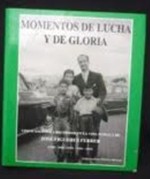
ANOTHER MOMENT IN HISTORY - A MOMENT OF LIGHT - THE LOST PICS OF DON PEPE
"Momentos de Lucha Y de Gloria" - by Christopher Knight.
Christopher Knight was clearing out some of his dad's photos in their house in Escazu, Costa Rica when friend's suggested they would make a remarkable book. His dad was a foreign correspondent in Costa Rica at a pivotal moment in time.
This is a photographic record of Don Pepe Figueres' takeover of Costa Rica to protect itself from itself and the subsequent efforts to put the country on track to today.
This is out of print and fascinating (Don Pepe, an unpretentious man wore the same tie on public occasions for some years and overindulged his son). It turns out he probably caused the civil war he and his followers thought of as protecting democracy.

MOST DETAILED AREA HANDBOOK - WELL IF YOU WERE CIA IN 1969
"Area Handbook for Costa Rica" - by Foreign Area Studies of the American University.
Ok so the only area handbook! Completely out of print but available from rare books sellers perhaps (email me if you need a source). This book was designed for military personnel and written in 1969.
Good source book for lots of data that shows up in subsequent tomes.
Um OK so this photo is not from the book but what you wanna bet he read it?
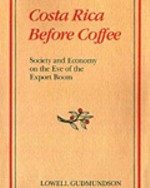
PECULIAR BOOK - AND DAMN HARD TO READ
"Costa Rica Before Coffee" - by Gudmundson
Society and economy at the eve of the export boom. Turgid prose (was this a thesis at some point?) but his "attack on the rural democratic myth" makes for interesting reading and discussion with your Tico hosts. Nobody here seems to worry about this major concern for visiting gringos.
You need this book only if you collect English language books with the name "Costa Rica" in the title. Geez it was hard work but someone gotta read it.
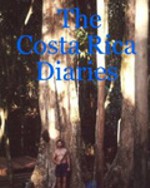
A COSTA RICAN TALE - REQUIRED READING FOR THOSE WHO WANT TO MOVE HERE AND LIVE IN THE JUNGLE UGH
"The Costa Rica Diaries" - by Hilary Amolins
"I needed a challenge" is how this personal diary starts. "I could no longer just dream about it . . ." Hilary Amolins continues. And so off he went to Costa Rica in 1993 seeking himself and a remote piece of paradise he could call his own.
This book could do with a bit more editing (OK a LOT more editing) but nonetheless it is a most interesting read and provides insights from the campo and on the road are just as it is or was. This book contains the unedited diary of a gringo's odyssey trying to find a tropical paradise he could call his own and establish an eco tourism resort in a very remote area in a part of Costa Rica "so isolated the only way to enter is by horseback or by sea".
If you are seeking adventure by moving to Costa Rica, I advise reading this book ONLY AFTER you have happily settled in (which is when I read it). This is an excellent tale of a lone gringo's effort to ignore bureaucracy, fight squatters and build a new life in the middle of absolutely nowhere, Costa Rica. Recommended!
Unhappy ending.

TALES OF COSTA RICA LIVING
"Guanacaste Snapshots" - by Susan Gordon
Experiences in rural Costa Rica. Her first chapter is called "Balanced on a Spider Web" and I think this is how many new residents of Costa Rica sometimes feel. The author did a stint as a peace corps volunteer in the 60's and moved to Costa Rica in 1973.
Each chapter is a standalone tale of some person, some event or time in a level of detail that makes the book readable and particularly interesting for those studying Costa Rica somewhere below the superficial level.
The title tells the tale.

POLITICS AND LOVE AFFAIRS
"Costa Rica Quest for Democracy" - by John A. Booth
A detailed attempt to understand Costa Rica from another who fell in love with the place.
Mr Booth starts with the comment,
"This book is a product of a long love and admiration for Costa Rica. The object of such strong emotions has at times proven both rewarding and vexatious, both more and less than one might have hoped. Costa Rica has seduced me again and again with its beauty, its democracy, its institutionalized pacifism and its scrappy egalitarian people. But its bureaucracy, inefficiency, pride of self, and intolerance have also sometimes driven me to distraction."
The book is loaded with data and interpretation - it is not an easy read but it is recommended.
Don't you wish such books could be online and updated by the writer periodically? And someone figured out a business model where they could make an honest buck doing so?

ANOTHER READER
"Costa Rica Reader - history, culture and politics" - by Steven Palmer.
Not sure why the Edelman book and this share the same title - is anyone checking for such stuff? Anyway I like them both - Plamer's and Edelman's books even share a similarly named first chapter.
But us history buffs can't get enough of this stuff though I must say it was hard to justify to my wife that I was buying the same book twice but they would be different (trust me).
Yes there is space for both on my bookshelf.

POLITICS AND LOVE AFFAIRS
"Costa Rica 1955 Pan American Union"
Limited pamphlet, fuzzy photo . . . I'll update later :-((

